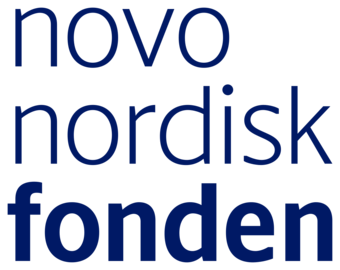Univ.-Prof. Dr. Igor Adameyko

The Igor Adameyko Laboratory focuses on understanding cellular and molecular mechanisms underlying the development of the nervous system and neural crest-derived tissues. The lab specializes in using cutting-edge single-cell techniques, clonal reconstructions and advanced imaging to investigate how different cell types emerge, interact, and organize during embryonic development. The Adameyko lab operates at the intersection of developmental biology and systems biology. Its foundational goal is to dissect the cellular dynamics and regulatory networks that drive tissue formation. One of the laboratory's hallmark approaches is clonal analysis at the single-cell level, a technique that allows to trace the lineage and fate of individual cells during development in massive and parallel way. This method involves labeling single cells and tracking their progeny over time, providing unprecedented insights into cell behavior, lineage specification, and the heterogeneity within developing tissues. By combining this approach with single-cell RNA sequencing (scRNA-seq), the lab can map clonal information to gene expression profiles of thousands individual cells and identify molecular cues guiding their development. The lab's interest in clonal analysis is particularly evident in its studies of the developing nervous system.
Focal points of interest
Here I would like to highlight several focal points of interest regarding GABAergic neurons, emphasizing their origins, developmental pathways, and the technological advancements being used to study them. These neurons originate during embryogenesis from specific progenitor zones, including the medial ganglionic eminence and caudal ganglionic eminence in the forebrain, as well as the ventral spinal cord. Despite the foundational knowledge of these processes, significant gaps remain in understanding the fine-grained lineage relationships between GABAergic subtypes also in light of their spatial localization. It is unclear how many subtypes can arise from a single progenitor and how progenitor diversity determines neuronal subtype specification. Furthermore, the role of temporal regulation in progenitor activation and its impact on subtype identity, spatial distribution, and circuit integration is poorly understood. These questions point to a need for more detailed lineage tracing and time-resolved analysis of GABAergic development. To address these gaps, we plan to use cutting-edge technologies, including clonal barcoded lentiviral libraries combined with single-cell RNA sequencing (scRNA-seq). This approach enables high-resolution lineage tracing, revealing how individual progenitor cells give rise to diverse GABAergic subtypes. By integrating these methods with spatial transcriptomics technologies such as MERFISH, we can study the spatial arrangement of GABAergic neurons within their native tissue contexts. MERFISH in theory allows for the visualization of clonal relationships while maintaining spatial gene expression information, providing insights into how progenitors migrate, differentiate, and settle in specific regions. By tracking clonal expansion and spatial distribution, researchers aim to determine whether clonally related neurons remain clustered or disperse widely across brain regions. Furthermore, they hope to uncover how local microenvironments influence differentiation and subtype specification. These findings could elucidate the developmental “windows” that shape GABAergic diversity and improve our understanding of how these neurons contribute to early circuit formation and CNS function. This comprehensive approach will advance our knowledge of inhibitory neuron development and provide a foundation for exploring therapeutic strategies for disorders involving GABAergic dysfunction.
Technical proficiency and instrumentation
The lab has succeeded in the integration of clonal analysis with single-cell RNA sequencing (scRNA-seq) to trace the lineage and differentiation pathways of individual cells in the developing nervous system and beyond. This methodology involves tagging progenitor cells with lentiviral genetic barcodes and fluorescent reporters, and subsequently profiling their gene expression at single-cell resolution. Through this, the lab reconstructs genealogically connected developmental trajectories at single cell resolution, revealing the molecular programs that govern cell fate decisions. The application of original machine learning based computational tools allows for the reconstruction of clonal hierarchies and the identification of transcriptional regulators critical for cell differentiation. The Adameyko lab has also mastered several advanced spatial transcriptomics platforms to explore gene expression within the spatial context of tissues, offering a window into cellular interactions and microenvironmental influences. The lab generates and analyzes Xenium, STOmix, VIsiumHD and MERFISH data for ultra-high-resolution spatial transcriptomics, enabling the visualization of gene expression at the subcellular level. The lab employs MERFISH to achieve highly multiplexed, spatially resolved transcriptomic profiling. This approach allows for the simultaneous measurement of thousands of transcripts across tissues while maintaining spatial resolution.
Aspirations for the next 5 years
On a global scale of the following years, by tracking clonal expansion and spatial distribution, we aim to determine whether clonally related neurons remain clustered or disperse widely across brain regions. Furthermore, we hope to uncover how local microenvironments influence differentiation and subtype specification. These findings could elucidate the developmental “windows” that shape GABAergic diversity and improve our understanding of how these neurons contribute to early circuit formation and CNS function. This comprehensive approach will advance our knowledge of inhibitory neuron development and provide a foundation for exploring therapeutic strategies for disorders involving GABAergic dysfunction.
References
- Faure L, Soldatov R, Kharchenko PV, Adameyko I. scFates: a scalable python package for advanced pseudotime and bifurcation analysis from single-cell data. Bioinformatics. 2023 Jan 1;39(1):btac746. doi: 10.1093/bioinformatics/btac746.
- Soldatov R, Kaucka M, Kastriti ME, Petersen J, Chontorotzea T, Englmaier L, Akkuratova N, Yang Y, Häring M, Dyachuk V, Bock C, Farlik M, Piacentino ML, Boismoreau F, Hilscher MM, Yokota C, Qian X, Nilsson M, Bronner ME, Croci L, Hsiao WY, Guertin DA, Brunet JF, Consalez GG, Ernfors P, Fried K, Kharchenko PV, Adameyko I. Spatiotemporal structure of cell fate decisions in murine neural crest. Science. 2019 Jun 7;364(6444):eaas9536. doi: 10.1126/science.aas9536.
- Ratz M, von Berlin L, Larsson L, Martin M, Westholm JO, La Manno G, Lundeberg J, Frisén J. Clonal relations in the mouse brain revealed by single-cell and spatial transcriptomics. Nat Neurosci. 2022 Mar;25(3):285-294. doi: 10.1038/s41593-022-01011-x. Epub 2022 Feb 24.





